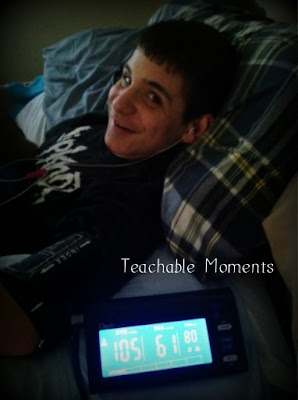In March I wrote about the screening process I use when deciding what can or cannot go on the iPods in our house. It was kind of funny and I always knew the lyrics that my kids were singing along to. It was fairly easy to settle on music selections because even if I did not particularly care for the genre I was happy that the words were not disgusting or offensive.
Then came the summer. We spent less time studying and that meant more time with the earbuds plugged in. It seemed like a good alternative to screen time and when I reminisced about how much time I spent listening to music at that age I knew that this was normal teen behavior. I did not really think much about it at first, but soon it became apparent that every time these guys were listening to music they weren’t getting along.
It is hard to explain – they weren’t really fighting about anything, but they would become easily annoyed. Their tone of voice became surly and there might be a push or a shove as they walked past one another. It took a little while, but I finally put two and two together. The combination of the volume and the asynchronous beats are rather chaotic and my guys have never been very good with sensory assault.
Immediately I saw an opportunity and in swooped Super Homeschool Mom to the rescue. I set up a bed with lots of pillows and a cozy blanket. I grabbed a blood pressure cuff, Boy One, and an iPod.
I had the boy get as comfortable as possible. He reclined back and had his arms up on pillows too. We took a baseline blood pressure and pulse and then I began the experiment.
My beautiful and healthy son had a blood pressure of 95/59 and a pulse of 64. I had him press the play button and the music began pumping into his ears. I kept the volume in the median range and made sure he did not move or sing along. I wanted him to remain perfectly still.
After a minute we took another vital signs reading. He was sure that in his zen-like state that if anything his numbers would be lower. He was as calm as could be, right?
You can see that he was surprised when he saw that his blood pressure had climbed to 105/61 and his pulse had increased by 16 beats to 80!
He doubled down on his relaxation. Now he closed his eyes, did some deep breathing, turned to his left side and lowered the volume. If we were grading effort, he would have had an A+. He did manage to bring the lower number which indicates his resting blood pressure (diastolic) down to 51. Unfortunately the pressure in the arteries when his heart was beating (systolic) climbed a little bit higher to 112 and his pulse continued to climb. It was now 15 beats per minute faster at 95.
As the saying goes – the numbers don’t lie. I had successfully demonstrated the effect the music was having on my kids. Then I told them to factor in what dancing around and singing along must do.
As a little bonus I was able to give a refresher course about the autonomic nervous system and the circulatory system while I made a case for a better variety of music.
You can probably tell that we had some fun with this. The exercise left an impression that the boys will not forget and it was much more effective than a lecture.





